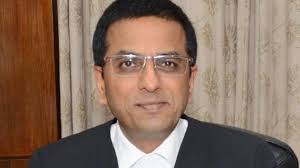NEW DELHI: With barely five working days left before his retirement on November 10, Chief Justice of India DY Chandrachud is expected to deliver several crucial verdicts, including those on the minority status of the Aligarh Muslim University (AMU) and validity of the Uttar Pradesh Board of Madarsa Education Act, 2004 and wealth redistribution issue.
After eight days of marathon arguments, a seven-judge Constitution Bench led by CJI Chandrachud had on February 1 reserved its verdict on the minority status of AMU which has been in the eye of the storm since 2006 when the Allahabad High Court struck down a 1981 amendment that declared it a minority institution.
If the Supreme Court finally declared AMU a minority institution, SCs, STs and OBCs will not get reservation in admission. The verdict would set a judicial precedent for a similar legal battle over the status for the Jamia Millia Islamia University, which was declared a minority institution during the UPA government in 2011. The issue was referred to a seven-judge Constitution Bench on February 12, 2019.
Noting that Article 30 of the Constitution was not intended to “ghettoise the minority”, the Bench had on January 11 wondered if it mattered whether AMU was a minority institution or not when it has continued to be an institute of national importance without the minority tag.
A three-judge Bench led by CJI Chandrachud is also expected to decide on the validity of the Uttar Pradesh Board of Madarsa Education Act, 2004 which regulates the functioning of madrasas in the state and aims to ensure quality education. The top court had reserved its verdict on the issue on October 22.
The top court had on April 5 stayed an order of the Allahabad High Court that declared unconstitutional the Uttar Pradesh Board of Madarsa Education Act, 2004. The high court’s views appeared to be prima facie incorrect, it had noted.
The Allahabad High Court had on March 22 declared the Act as unconstitutional, saying a secular state has no power to create a board for religious education or to establish a board for school education only for a particular religion and create separate education systems for separate religions. The HC said the Act violated Articles 21 (right to life and liberty) and 21A (right to free and compulsory education for children between 6 and 14 years) of the Constitution.
The Uttar Pradesh Government had said that it stood by its Act and that the Allahabad High Court was wrong in declaring the entire law unconstitutional.
However, describing madrasas as an “unsuitable and unfit” place to receive “proper” education, the National Commission for Protection of Child Rights (NCPCR) has told the Supreme Court that madrasas not being schools — as defined under the Right to Education Act, 2009 — have no right to compel children or their families to receive madrasa education.
A nine-judge Bench led by CJI Chandrachud is to decide if the government can requisition private property and redistribute it for public good.
The Bench – which reserved its verdict on the contentious issue on May 1 – will decide whether private properties can be considered “material resources of the community” within the meaning of Article 39(b) of the Constitution and consequently, taken over by the state to subserve the common good.


